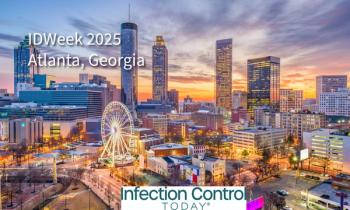
Social Media Poised to Drive Disaster Preparedness and Response
Social media tools like Facebook, Twitter and Foursquare may be an important key to improving the public health systems ability to prepare for, respond to, and recover from disasters, according to a New England Journal of Medicine "Perspective" article from the Perelman School of Medicine at the University of Pennsylvania to be published this week. From outbreaks to earthquakes to oil spills or other industrial accidents to weather-related events like heat waves and flooding, the authors suggest that harnessing crowd-sourcing technologies and electronic communications tools will set the stage to handle emergencies in a quicker, more coordinated, effective way.
Noting that more than 40 million Americans use social media Web sites multiple times a day, the researchers suggest that social media enables an unprecedented, two-way exchange between the public and public health professionals. Officials can "push" information to the public while simultaneously "pulling" in data from lay bystanders. The authors, led by Raina M. Merchant, MD, MS, an assistant professor of Emergency Medicine, studied recent experiments in using social media to augment disaster response, and point to several examples as burgeoning best practices. During the 2009 H1N1 influenza pandemic, the U.S. Department of Health and Human Services "Mommycast" over YouTube an iTunes helped keep 1 million viewers up to date about the disease, arming them with tips on what to expect and how to prevent the flus spread, and regional health departments drew people to vaccination sites within minutes of texting and Tweeting about shot availability. The Centers for Disease Control and Preventions @CDCemergency Twitter following grew 20-fold within the year. More recently, in the aftermath of the 2010 Deepwater Horizon oil spill, community residents texted photos of oiled birds to officials and volunteers to help them plan clean-up efforts.
"By sharing images, texting, and tweeting, the public is already becoming part of a large response network, rather than remaining mere bystanders or casualties," the authors write, noting that the extensive reach of social networks allows people who are recovering from disasters to rapidly connect with resources to obtain help. And taken together, the information generated through social media especially when linked to timelines and interactive maps -- provides a historical record of how events unfold, serving as "a cohesive story about a recovering communitys capabilities and vulnerabilities in real time."
Among examples the authors suggest for future social media tactics to buoy disaster preparedness and response:
- Taking GPS-linked mobile phone apps like Foursquare and Loopt into the arena of crisis preparedness by having off-duty nurses or paramedics who "check in" at a venue broadcast their professional background and willingness to help during nearby emergencies.
- Creation of Web-based "buddy" systems to enable friends and neighbors to keep tabs on at-risk people during weather emergencies like heat waves and blizzards and connect them with social services and medical care staving off dire consequences like the hundreds of deaths that occurred during the 1995 Chicago heat weave.
- Greater use of RSS feeds and mobile apps that provide emergency room wait times and census data, as a tool for helping public health planners gauge strain on the healthcare system and divert patients to facilities with sufficient resources during a disaster.
Additional authors of the study include Nicole Lurie, MD, MSPH, and Stacy Elmer, MA, of the Office of the Assistant Secretary for Preparedness and Response in the U.S. Department of Health and Human Services.
Newsletter
Stay prepared and protected with Infection Control Today's newsletter, delivering essential updates, best practices, and expert insights for infection preventionists.





